Yongwei Wang
NAN: A Training-Free Solution to Coefficient Estimation in Model Merging
May 22, 2025Abstract:Model merging offers a training-free alternative to multi-task learning by combining independently fine-tuned models into a unified one without access to raw data. However, existing approaches often rely on heuristics to determine the merging coefficients, limiting their scalability and generality. In this work, we revisit model merging through the lens of least-squares optimization and show that the optimal merging weights should scale with the amount of task-specific information encoded in each model. Based on this insight, we propose NAN, a simple yet effective method that estimates model merging coefficients via the inverse of parameter norm. NAN is training-free, plug-and-play, and applicable to a wide range of merging strategies. Extensive experiments on show that NAN consistently improves performance of baseline methods.
Motion-Coupled Mapping Algorithm for Hybrid Rice Canopy
Feb 22, 2025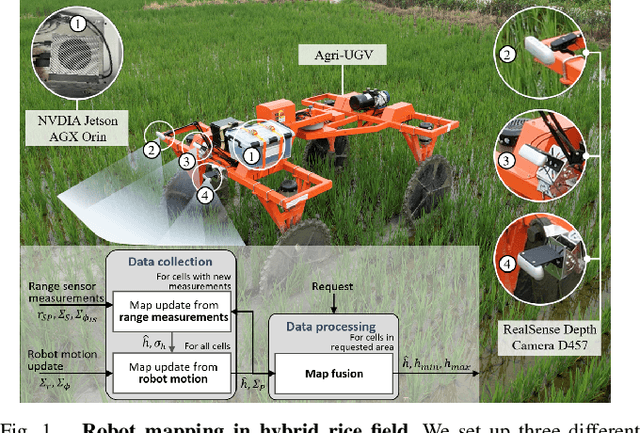
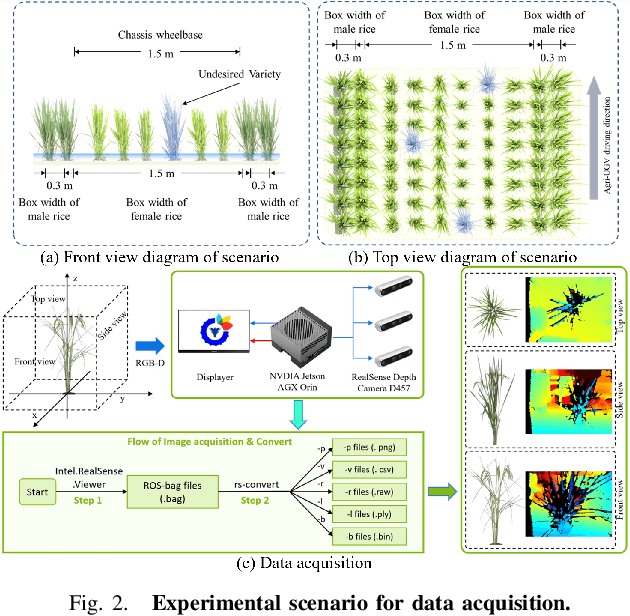
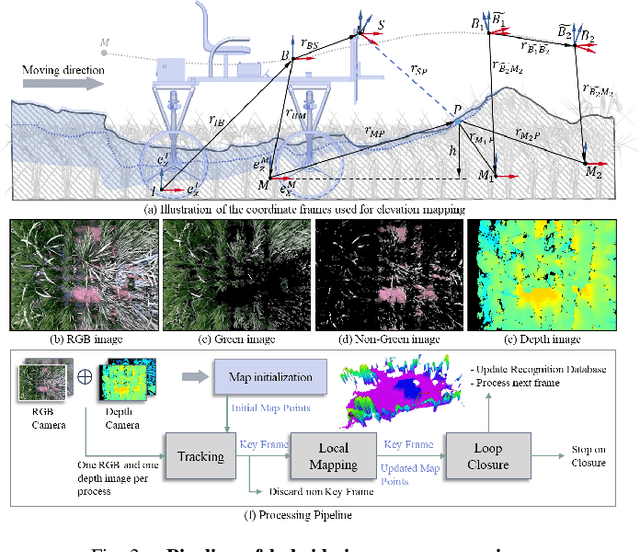
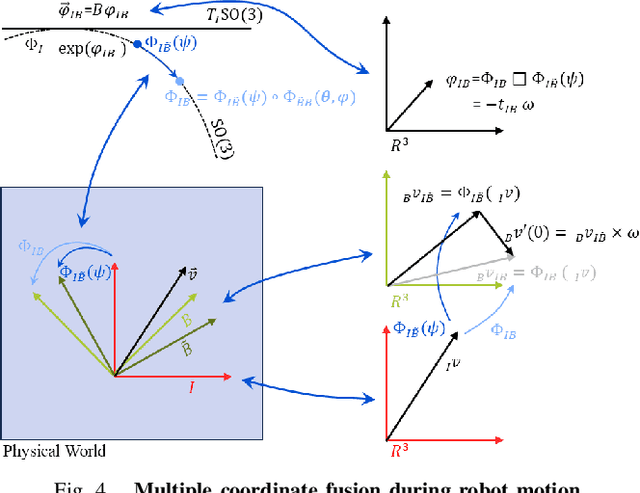
Abstract:This paper presents a motion-coupled mapping algorithm for contour mapping of hybrid rice canopies, specifically designed for Agricultural Unmanned Ground Vehicles (Agri-UGV) navigating complex and unknown rice fields. Precise canopy mapping is essential for Agri-UGVs to plan efficient routes and avoid protected zones. The motion control of Agri-UGVs, tasked with impurity removal and other operations, depends heavily on accurate estimation of rice canopy height and structure. To achieve this, the proposed algorithm integrates real-time RGB-D sensor data with kinematic and inertial measurements, enabling efficient mapping and proprioceptive localization. The algorithm produces grid-based elevation maps that reflect the probabilistic distribution of canopy contours, accounting for motion-induced uncertainties. It is implemented on a high-clearance Agri-UGV platform and tested in various environments, including both controlled and dynamic rice field settings. This approach significantly enhances the mapping accuracy and operational reliability of Agri-UGVs, contributing to more efficient autonomous agricultural operations.
* Best Paper Award First Place - IROS 2024 Workshop on AI and Robotics For Future Farming
DeMuVGN: Effective Software Defect Prediction Model by Learning Multi-view Software Dependency via Graph Neural Networks
Oct 25, 2024Abstract:Software defect prediction (SDP) aims to identify high-risk defect modules in software development, optimizing resource allocation. While previous studies show that dependency network metrics improve defect prediction, most methods focus on code-based dependency graphs, overlooking developer factors. Current metrics, based on handcrafted features like ego and global network metrics, fail to fully capture defect-related information. To address this, we propose DeMuVGN, a defect prediction model that learns multi-view software dependency via graph neural networks. We introduce a Multi-view Software Dependency Graph (MSDG) that integrates data, call, and developer dependencies. DeMuVGN also leverages the Synthetic Minority Oversampling Technique (SMOTE) to address class imbalance and enhance defect module identification. In a case study of eight open-source projects across 20 versions, DeMuVGN demonstrates significant improvements: i) models based on multi-view graphs improve F1 scores by 11.1% to 12.1% over single-view models; ii) DeMuVGN improves F1 scores by 17.4% to 45.8% in within-project contexts and by 17.9% to 41.0% in cross-project contexts. Additionally, DeMuVGN excels in software evolution, showing more improvement in later-stage software versions. Its strong performance across different projects highlights its generalizability. We recommend future research focus on multi-view dependency graphs for defect prediction in both mature and newly developed projects.
Hyper Adversarial Tuning for Boosting Adversarial Robustness of Pretrained Large Vision Models
Oct 08, 2024



Abstract:Large vision models have been found vulnerable to adversarial examples, emphasizing the need for enhancing their adversarial robustness. While adversarial training is an effective defense for deep convolutional models, it often faces scalability issues with large vision models due to high computational costs. Recent approaches propose robust fine-tuning methods, such as adversarial tuning of low-rank adaptation (LoRA) in large vision models, but they still struggle to match the accuracy of full parameter adversarial fine-tuning. The integration of various defense mechanisms offers a promising approach to enhancing the robustness of large vision models, yet this paradigm remains underexplored. To address this, we propose hyper adversarial tuning (HyperAT), which leverages shared defensive knowledge among different methods to improve model robustness efficiently and effectively simultaneously. Specifically, adversarial tuning of each defense method is formulated as a learning task, and a hypernetwork generates LoRA specific to this defense. Then, a random sampling and tuning strategy is proposed to extract and facilitate the defensive knowledge transfer between different defenses. Finally, diverse LoRAs are merged to enhance the adversarial robustness. Experiments on various datasets and model architectures demonstrate that HyperAT significantly enhances the adversarial robustness of pretrained large vision models without excessive computational overhead, establishing a new state-of-the-art benchmark.
HyperDet: Generalizable Detection of Synthesized Images by Generating and Merging A Mixture of Hyper LoRAs
Oct 08, 2024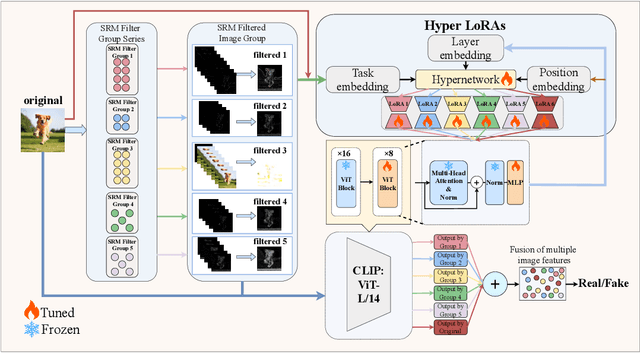



Abstract:The emergence of diverse generative vision models has recently enabled the synthesis of visually realistic images, underscoring the critical need for effectively detecting these generated images from real photos. Despite advances in this field, existing detection approaches often struggle to accurately identify synthesized images generated by different generative models. In this work, we introduce a novel and generalizable detection framework termed HyperDet, which innovatively captures and integrates shared knowledge from a collection of functionally distinct and lightweight expert detectors. HyperDet leverages a large pretrained vision model to extract general detection features while simultaneously capturing and enhancing task-specific features. To achieve this, HyperDet first groups SRM filters into five distinct groups to efficiently capture varying levels of pixel artifacts based on their different functionality and complexity. Then, HyperDet utilizes a hypernetwork to generate LoRA model weights with distinct embedding parameters. Finally, we merge the LoRA networks to form an efficient model ensemble. Also, we propose a novel objective function that balances the pixel and semantic artifacts effectively. Extensive experiments on the UnivFD and Fake2M datasets demonstrate the effectiveness of our approach, achieving state-of-the-art performance. Moreover, our work paves a new way to establish generalizable domain-specific fake image detectors based on pretrained large vision models.
Training-free LLM-generated Text Detection by Mining Token Probability Sequences
Oct 08, 2024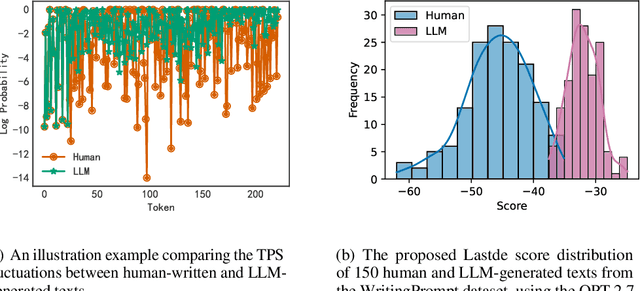

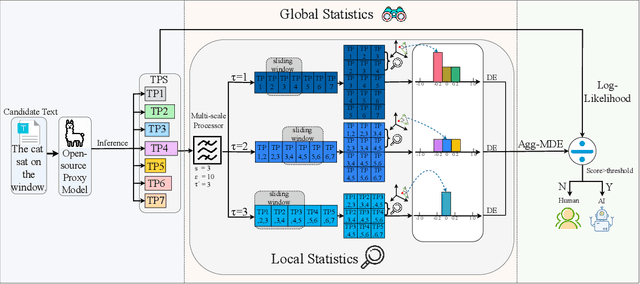

Abstract:Large language models (LLMs) have demonstrated remarkable capabilities in generating high-quality texts across diverse domains. However, the potential misuse of LLMs has raised significant concerns, underscoring the urgent need for reliable detection of LLM-generated texts. Conventional training-based detectors often struggle with generalization, particularly in cross-domain and cross-model scenarios. In contrast, training-free methods, which focus on inherent discrepancies through carefully designed statistical features, offer improved generalization and interpretability. Despite this, existing training-free detection methods typically rely on global text sequence statistics, neglecting the modeling of local discriminative features, thereby limiting their detection efficacy. In this work, we introduce a novel training-free detector, termed \textbf{Lastde} that synergizes local and global statistics for enhanced detection. For the first time, we introduce time series analysis to LLM-generated text detection, capturing the temporal dynamics of token probability sequences. By integrating these local statistics with global ones, our detector reveals significant disparities between human and LLM-generated texts. We also propose an efficient alternative, \textbf{Lastde++} to enable real-time detection. Extensive experiments on six datasets involving cross-domain, cross-model, and cross-lingual detection scenarios, under both white-box and black-box settings, demonstrated that our method consistently achieves state-of-the-art performance. Furthermore, our approach exhibits greater robustness against paraphrasing attacks compared to existing baseline methods.
DocGenome: An Open Large-scale Scientific Document Benchmark for Training and Testing Multi-modal Large Language Models
Jun 17, 2024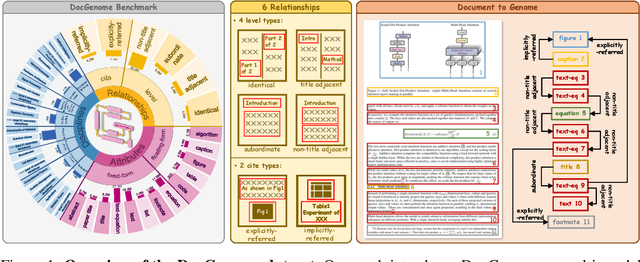


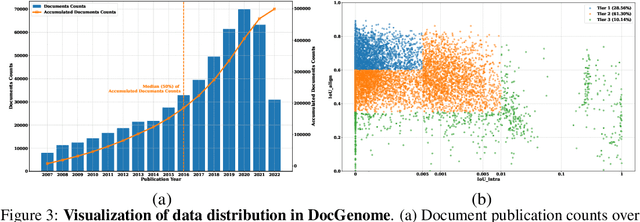
Abstract:Scientific documents record research findings and valuable human knowledge, comprising a vast corpus of high-quality data. Leveraging multi-modality data extracted from these documents and assessing large models' abilities to handle scientific document-oriented tasks is therefore meaningful. Despite promising advancements, large models still perform poorly on multi-page scientific document extraction and understanding tasks, and their capacity to process within-document data formats such as charts and equations remains under-explored. To address these issues, we present DocGenome, a structured document benchmark constructed by annotating 500K scientific documents from 153 disciplines in the arXiv open-access community, using our custom auto-labeling pipeline. DocGenome features four key characteristics: 1) Completeness: It is the first dataset to structure data from all modalities including 13 layout attributes along with their LaTeX source codes. 2) Logicality: It provides 6 logical relationships between different entities within each scientific document. 3) Diversity: It covers various document-oriented tasks, including document classification, visual grounding, document layout detection, document transformation, open-ended single-page QA and multi-page QA. 4) Correctness: It undergoes rigorous quality control checks conducted by a specialized team. We conduct extensive experiments to demonstrate the advantages of DocGenome and objectively evaluate the performance of large models on our benchmark.
CCDM: Continuous Conditional Diffusion Models for Image Generation
May 06, 2024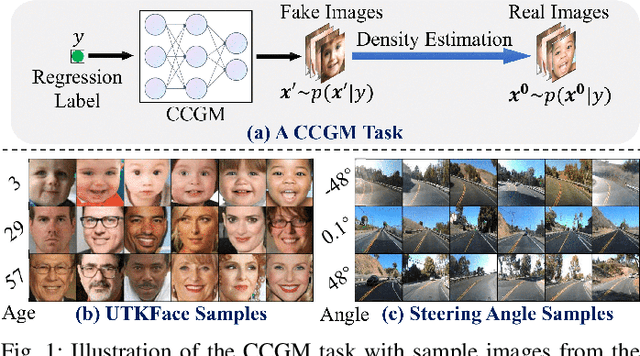
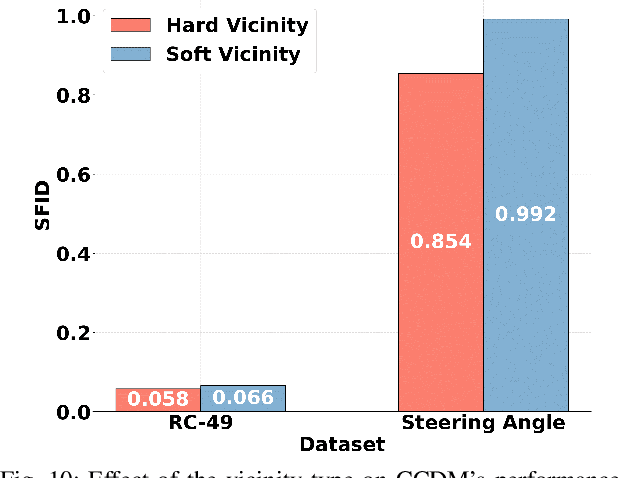
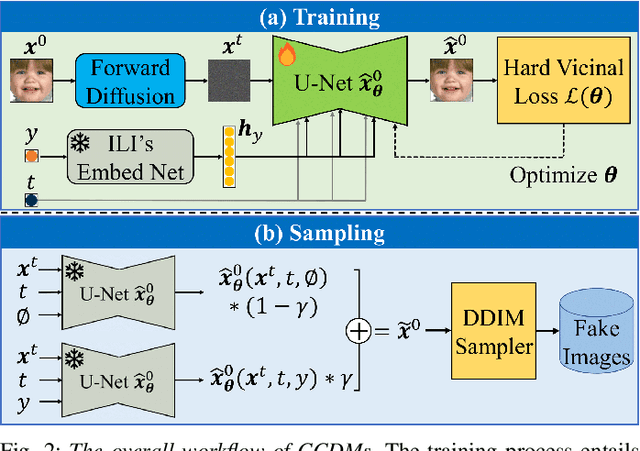
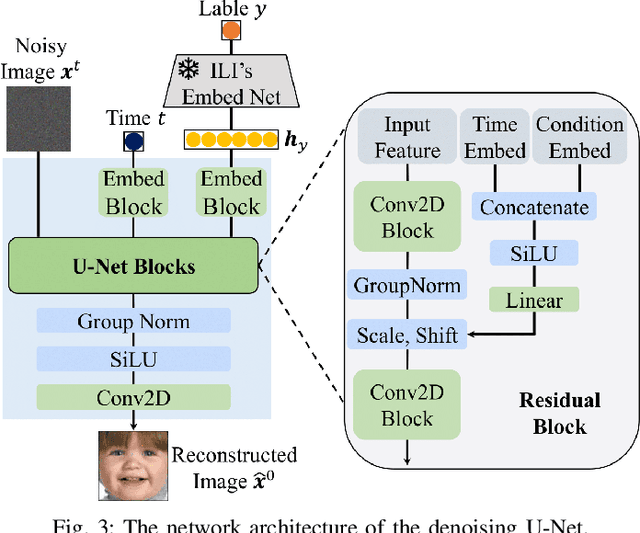
Abstract:Continuous Conditional Generative Modeling (CCGM) aims to estimate the distribution of high-dimensional data, typically images, conditioned on scalar continuous variables known as regression labels. While Continuous conditional Generative Adversarial Networks (CcGANs) were initially designed for this task, their adversarial training mechanism remains vulnerable to extremely sparse or imbalanced data, resulting in suboptimal outcomes. To enhance the quality of generated images, a promising alternative is to replace CcGANs with Conditional Diffusion Models (CDMs), renowned for their stable training process and ability to produce more realistic images. However, existing CDMs encounter challenges when applied to CCGM tasks due to several limitations such as inadequate U-Net architectures and deficient model fitting mechanisms for handling regression labels. In this paper, we introduce Continuous Conditional Diffusion Models (CCDMs), the first CDM designed specifically for the CCGM task. CCDMs address the limitations of existing CDMs by introducing specially designed conditional diffusion processes, a modified denoising U-Net with a custom-made conditioning mechanism, a novel hard vicinal loss for model fitting, and an efficient conditional sampling procedure. With comprehensive experiments on four datasets with varying resolutions ranging from 64x64 to 192x192, we demonstrate the superiority of the proposed CCDM over state-of-the-art CCGM models, establishing new benchmarks in CCGM. Extensive ablation studies validate the model design and implementation configuration of the proposed CCDM. Our code is publicly available at https://github.com/UBCDingXin/CCDM.
Impart: An Imperceptible and Effective Label-Specific Backdoor Attack
Mar 18, 2024Abstract:Backdoor attacks have been shown to impose severe threats to real security-critical scenarios. Although previous works can achieve high attack success rates, they either require access to victim models which may significantly reduce their threats in practice, or perform visually noticeable in stealthiness. Besides, there is still room to improve the attack success rates in the scenario that different poisoned samples may have different target labels (a.k.a., the all-to-all setting). In this study, we propose a novel imperceptible backdoor attack framework, named Impart, in the scenario where the attacker has no access to the victim model. Specifically, in order to enhance the attack capability of the all-to-all setting, we first propose a label-specific attack. Different from previous works which try to find an imperceptible pattern and add it to the source image as the poisoned image, we then propose to generate perturbations that align with the target label in the image feature by a surrogate model. In this way, the generated poisoned images are attached with knowledge about the target class, which significantly enhances the attack capability.
HGAttack: Transferable Heterogeneous Graph Adversarial Attack
Jan 18, 2024



Abstract:Heterogeneous Graph Neural Networks (HGNNs) are increasingly recognized for their performance in areas like the web and e-commerce, where resilience against adversarial attacks is crucial. However, existing adversarial attack methods, which are primarily designed for homogeneous graphs, fall short when applied to HGNNs due to their limited ability to address the structural and semantic complexity of HGNNs. This paper introduces HGAttack, the first dedicated gray box evasion attack method for heterogeneous graphs. We design a novel surrogate model to closely resemble the behaviors of the target HGNN and utilize gradient-based methods for perturbation generation. Specifically, the proposed surrogate model effectively leverages heterogeneous information by extracting meta-path induced subgraphs and applying GNNs to learn node embeddings with distinct semantics from each subgraph. This approach improves the transferability of generated attacks on the target HGNN and significantly reduces memory costs. For perturbation generation, we introduce a semantics-aware mechanism that leverages subgraph gradient information to autonomously identify vulnerable edges across a wide range of relations within a constrained perturbation budget. We validate HGAttack's efficacy with comprehensive experiments on three datasets, providing empirical analyses of its generated perturbations. Outperforming baseline methods, HGAttack demonstrated significant efficacy in diminishing the performance of target HGNN models, affirming the effectiveness of our approach in evaluating the robustness of HGNNs against adversarial attacks.
 Add to Chrome
Add to Chrome Add to Firefox
Add to Firefox Add to Edge
Add to Edge